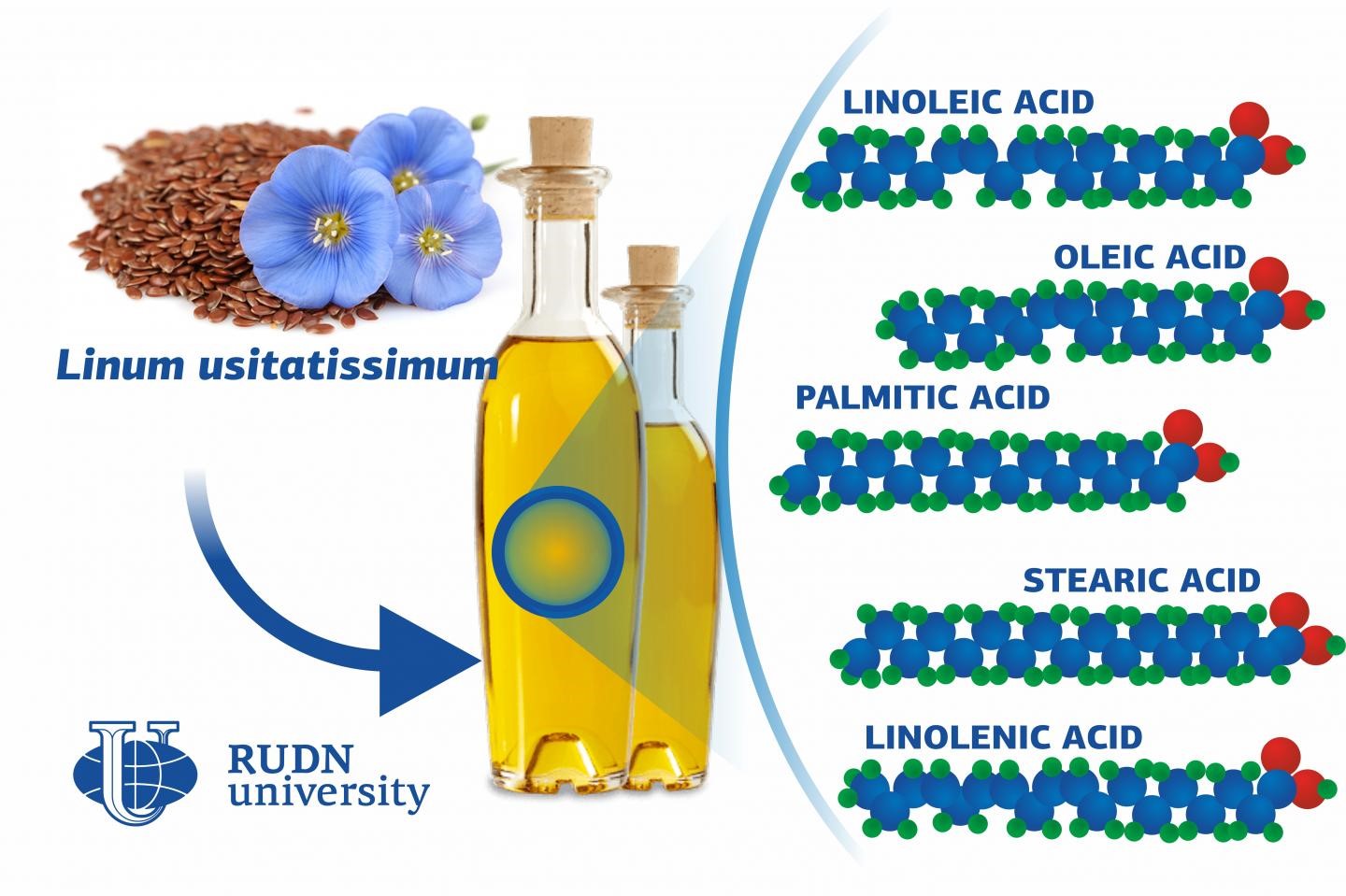Biologists from RUDN University discovered the secret of flaxseed oil with long shelf life

Linum usitatissimum or common flax has been known as an oil crop since the early Neolithic Age. Its seeds are used to produce oil, paints, lacquers, biofuel, resins, linseed oil varnish, linoleum, and pet food, while its stocks are a source of fiber for textiles and sealing materials. Breeds and lines of flax differ by fatty acid content and composition. The lines that contain less than 5% of linolenic acid but have a high content of linolic acid are known for long shelf life which is important for the food industry. The synthesis of fatty acids in flax is determined by genes that belong to the SAD and FAD families. A team of biologists including specialists from RUDN University used deep DNA sequencing to study the genome of flax and confirmed that SAD and FAD genes and their polymorphisms directly affect the fatty acid content in flax seeds and the shelf life of flaxseed oil.
“We created a representative set of 84 flax breeds and lines with different fatty acid content in their oil. Using deep sequencing, we identified the sequences of six genes: SAD1, SAD2, FAD2A, FAD2B, FAD3A and FAD3B,” said Parfait Kezimana, a postgraduate student at the Agrarian and Technological Institute of RUDN University.
The team studied the genetic material of 50 flax germs from each breed and line to find polymorphisms allowing for intraparietal heterogeneity. Using the Illumina platform (MiSeq sequencer) with 400? coverage, the team managed to accurately identify the sequence of the genes.
Based on the content of fatty acids in flaxseed oil and different polymorphisms in the studied genes, the team found out which genes and their allelic variants determined the quantities of certain acids. All but one breed with low linolenic acid content had a polymorphism that substituted the amino acid histidine in FAD3B with tyrosine and the amino acid tryptophan in FAD3A with a stop codon. Thanks to these mutations, the oil made from these breeds of flax has a longer shelf life and is better preserved.
“We have evaluated the polymorphisms of SAD and FAD genes in a set of flax breeds and lines with different oil compositions and identified the polymorphisms that determine the content of fatty acids in them. Our results could be used to develop markers for the genetic selection of new flax breeds. In the future, breeds could be certified based on their DNA sequences,” added Parfait Kezimana from RUDN University.
The article was published in BMC Plant Biology.
The project to develop a cellular model of the placenta became the winner in the Scientific Materials category of the Young Scientists 3.0 competition, organized with the support of the Presidential Grants Foundation and T-Bank.
Ten scientific journals published by RUDN University have been included in the highest level of the state list of scientific publications, the White List.
Forests are not only the lungs of the planet, but also home to millions of species. However, it has remained unclear how underground interactions between trees and fungi affect forest species richness in different climatic conditions. Previous studies have yielded conflicting results: in some regions, the dominance of certain fungi reduced tree diversity, while in others it increased it.
The project to develop a cellular model of the placenta became the winner in the Scientific Materials category of the Young Scientists 3.0 competition, organized with the support of the Presidential Grants Foundation and T-Bank.
Ten scientific journals published by RUDN University have been included in the highest level of the state list of scientific publications, the White List.
Forests are not only the lungs of the planet, but also home to millions of species. However, it has remained unclear how underground interactions between trees and fungi affect forest species richness in different climatic conditions. Previous studies have yielded conflicting results: in some regions, the dominance of certain fungi reduced tree diversity, while in others it increased it.